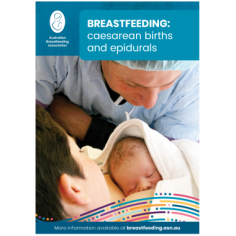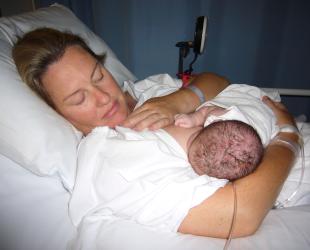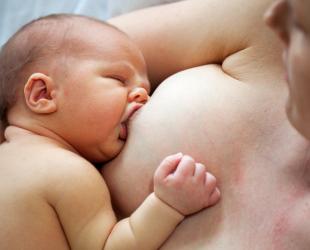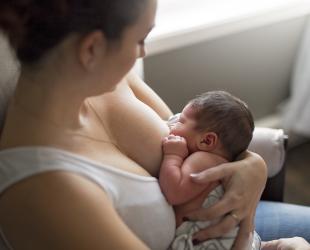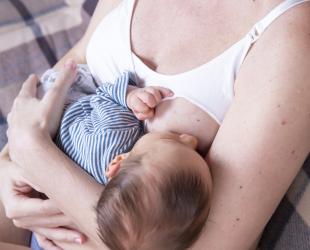Yes, you can breastfeed after a c-section!
Understand your baby’s feeding behaviour and get support.
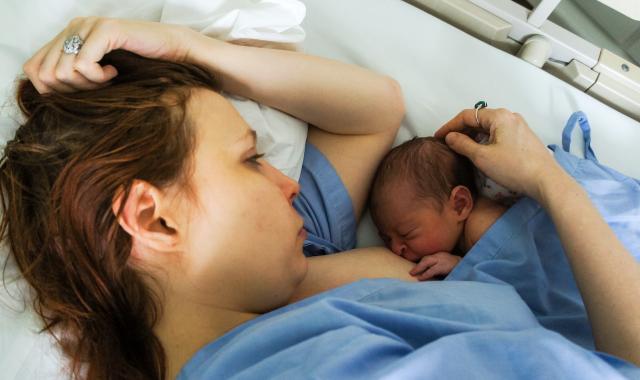
After an elective caesarean birth, babies are usually quite alert, which is ideal for their first breastfeed.
If you need to have an emergency caesarean, that can sometimes be more stressful for both you and your baby. There are also different types of anaesthetics used depending on the circumstances. Most mothers have an epidural anaesthetic or spinal block, so they are awake and alert throughout. Sometimes a general anaesthetic is needed but the mother usually wakes up quickly from this.
At the birth
Your partner or support person is an important source of moral and physical support during a caesarean birth. Together you can remind your doctor, midwives or other birth attendants that you wish to hold your baby skin-to-skin and start breastfeeding as soon as possible.
After the birth
Try to have your baby held by as few people as possible. You could ask that your baby be placed on your chest in skin-to-skin contact once they have been checked over, and while the doctor is stitching you up.
If this is not possible, your baby may be able to be skin-to-skin with you in the recovery room. Breastfeeding can be a part of this loving and bonding time. Whatever anaesthesia you are given, it does not need to prevent you from breastfeeding your baby.
Breastfeeding your baby
Although there may be short-term effects (eg a slight delay in your milk supply increasing), the way your baby is born generally doesn’t make a difference to how well you can breastfeed.
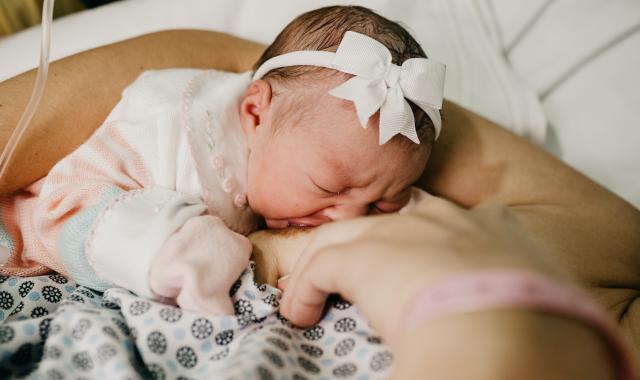
You will have a wound from your caesarean birth but you should still be able to find a position to hold your baby that helps them attach well to your breast. You can:
Try holding your baby in the underarm (also called 'twin' or ‘football’) position, with their feet towards your back.
Put a pillow on your lap to support your baby and protect your wound.
Lie down on your side.
Lie in a laid-back position with your baby off to one side (you may need help to get into this position).
Whatever hold you use, your baby's body will be close to you, chest to chest, chin to breast and nose away from the breast. The same attachment applies no matter how you hold your baby.
When breastfeeding must wait
It's good for you and your baby to be in skin-to-skin contact straight away and for your baby to breastfeed within an hour of birth. But sometimes breastfeeding has to wait a bit. You may have had a general anaesthetic or your baby may need to be put in a humidicrib for a while to stabilise their condition.
The one important thing you can do while waiting is to express your colostrum. Colostrum is like 'super' breastmilk and contains more concentrated protein and immunity factors than mature breastmilk. It also acts as a natural laxative for the meconium, your baby's first poo.
In the first few weeks
Rest is important for any new mother, but even more so if you’ve had a caesarean birth. Breastfeeding gives you a wonderful excuse to sit or lie down!
A caesarean birth is major abdominal surgery, so you may find you have a slower return to your normal energy level than a mum who's had a vaginal birth. Your body needs time to recover. Take care not to lift or move anything that is heavier than your baby for at least 6 weeks, or until your postnatal check-up.
© Australian Breastfeeding Association April 2022
Read more about epidurals and caesarean births
Evidence-led info and practical tips from our Special Situation Information Series
Breastfeeding: caesarean births and epidurals
